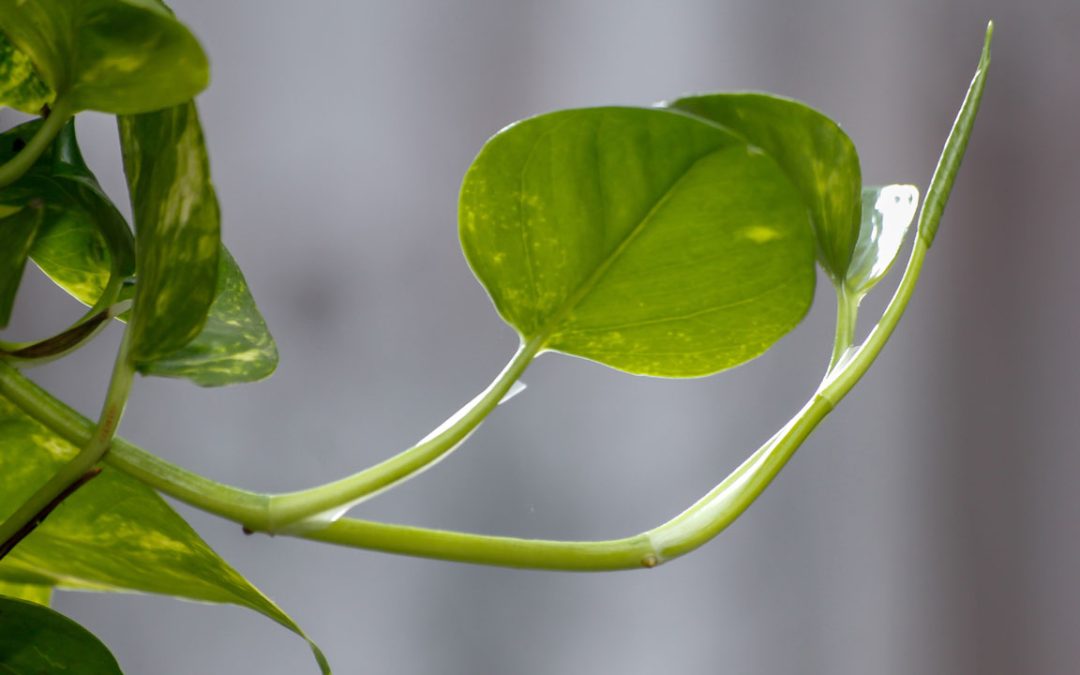Vining house plants not only bring a lush aesthetic to indoor spaces but also improve air quality. Through photosynthesis, plants absorb carbon dioxide and release oxygen, thereby refreshing the air we breathe. Furthermore, many vining plants have the ability to filter out common indoor pollutants such as formaldehyde and benzene, contributing to a healthier living environment.
Incorporating greenery into modern interior design is more than a trend; it’s a transformative approach that enhances living spaces visually and psychologically. The presence of plants can reduce stress, boost mood and creativity, and even enhance cognitive function by reconnecting indoor environments with nature
This guide will walk you through choosing the right plants for your interior planting design, caring for them, providing them with adequate light, and troubleshooting common issues.
Selecting The Right Plants
Light Conditions
To select the right plants for your space, start by assessing the light conditions. Vining plants such as Pothos and Philodendrons thrive in bright, indirect light but can also adapt to lower light levels, making them versatile for various indoor settings.
Ideal Indoor Plants
For indoor environments, consider plants that are not only beautiful but also resilient and low-maintenance. Peace Lilies, Pothos, and Snake Plants are excellent choices. These plants require minimal care beyond regular watering and indirect light, making them suitable even for those new to gardening.
Popular Vining Plants
Peace Lilies
Known for their elegant white blooms, Peace Lilies are more than just visually appealing. They are powerful air purifiers, making them ideal for bedrooms and living areas where clean air is essential for relaxation and well-being.
Pothos Plants
Pothos plants are celebrated for their hardy nature and beautiful, heart-shaped leaves. They can thrive in a variety of lighting conditions and are particularly forgiving, making them perfect for beginners.
Snake Plants
Renowned for their striking tall leaves and robust nature, Snake Plants can tolerate neglect, thriving on minimal water and moderate light. They are particularly known for improving indoor air quality by filtering out toxins
Caring For Your Vining Plants
To ensure the beauty and health of your indoor garden, understanding the nuances of caring for your vining plants is crucial. With the right techniques, you can enhance your interior planting design, ensuring your green investments continue to thrive under your care.
Watering Techniques
Proper watering is crucial for the health of vining plants. The frequency and amount of water required can vary significantly between different types of plants. For instance, Waxy Ivy should only be watered when the soil is completely dry, as it is prone to root rot if overwatered. On the other hand, the Rex Begonia Vine needs its soil to be consistently moist but not waterlogged, reflecting its need for a balance between hydration and drainage. Generally, it’s a good practice to allow the top inch of soil to dry out before watering again. This method helps prevent overwatering, which is a common issue for indoor plants.
Fertilization
Fertilizing your vining plants can significantly enhance their growth and health. It is recommended to fertilize during the growing season, typically from spring through summer. A balanced, water-soluble fertilizer applied every 4 to 6 weeks works well for most indoor vining plants. During the winter months, when plant growth naturally slows, reduce fertilization frequency to prevent potential nutrient overload
Providing Adequate Light
Light is a pivotal element of interior planting design. Ensuring your plants receive the appropriate amount of light can make a significant difference in their growth and the energy they bring to your space.
- Sunlight Needs: The light requirements for vining house plants can vary, but most prefer bright, indirect light. Direct sunlight can be too harsh for indoor vines and may lead to scorched leaves. For example, the Rex Begonia Vine and Pothos thrive in bright, indirect light but will suffer in prolonged direct sunlight. If you’re unsure about the light levels in your home, using a light meter can help determine suitable spots for your plants.
- Using Grow Lights: Grow lights are an excellent alternative for areas that don’t receive adequate natural sunlight. They can provide the necessary light spectrum for photosynthesis. When using grow lights, place them about 12 inches above the plants and keep them on for 12 to 16 hours a day to mimic natural sunlight. This setup is particularly useful during the darker winter months or in naturally darker spaces like basements or interior rooms.
- Rotating Plants: Regularly rotating your plants ensures that each side receives equal exposure to light, promoting uniform growth and preventing the plant from leaning toward the light source. This is especially important for plants near windows, as they tend to grow towards the natural light. A quarter turn weekly is usually sufficient.
Training And Support
- Training Methods: Training vining plants to climb or trail can add visual interest and dimension to your home décor. Use soft ties or twine to gently guide the growth along supports without damaging the stems. For climbing plants, structures like moss poles or trellises can be used, while trailing plants look great in hanging baskets or draped over shelves.
- Support Structures: Supports such as trellises, stakes, or moss poles are essential for climbing vines, helping maintain plant health and appearance by providing stability and encouraging vertical growth. For trailing vines, consider using hanging baskets or high shelves that allow the plant to cascade naturally. These supports not only help manage the plant’s growth but also enhance its decorative appeal.
Dealing With Common Issues
Maintaining the health of your vining house plants often involves addressing the issues they may encounter. For persistent issues, employ professional plant services to ensure the longevity and vibrancy of your interior planting design.
Recognizing Problems
- Overwatering: Signs include yellowing leaves starting with the oldest, edema (water-soaked spots on leaves), and a general wilting or mushy stems. Overwatered soil will feel soggy and may have a moldy surface.
- Underwatering: Look for dry, crispy leaves, particularly around the edges, and soil that pulls away from the pot sides. Underwatered plants display slow, stunted growth and the leaves might feel brittle. The soil will be dry and may repel water instead of absorbing it.
- Pests: Common indoor pests include aphids, mealybugs, and spider mites, which typically feed on the sap of the plants, leaving behind sticky residue or webs. Fungus gnats might indicate overly moist soil conditions.
Troubleshooting Tips
For Overwatering:
- Allow the soil to dry out before watering again. Use pots with good drainage and avoid letting plants sit in standing water. Adjust watering schedules according to seasonal changes in plant growth and indoor conditions.
For Underwatering:
- Increase watering frequency, ensuring that the entire root ball is moistened. Use a soil mix that retains moisture well but still allows for adequate drainage. Consider the use of self-watering pots or systems to maintain consistent moisture levels.
For Pest Control:
- Regularly inspect plants for signs of pests and isolate infested plants to prevent spreading. Treat infestations with insecticidal soap or neem oil, applying according to the severity of the infestation. Maintain proper humidity levels to discourage pest proliferation.
Cultivating A Thriving Indoor Vine Garden With Mr. PlantSoCal
Vining house plants offer a unique combination of aesthetic appeal and environmental benefits, making them a worthy addition to any home. By selecting the right species, providing proper care, and addressing common issues proactively, you can ensure that your indoor garden thrives. These plants not only decorate your space but also contribute to a healthier, more vibrant living environment.
Elevate your home or office with the beauty of nature. Visit Mr. Plant SoCal plant services today to explore our wide selection of vining house plants and more. Transform your space into a lush indoor paradise now!


